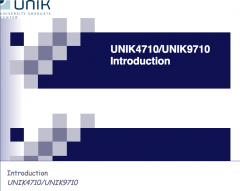Mobile Network Challenges
| Wiki for ITS | ||||||
|---|---|---|---|---|---|---|
|
Mobile Network Challenges
| Course | UNIK4700, UNIK9700 |
|---|---|
| Title | Mobile Network Challegnes |
| Lecture date | 2016/12/06 1300-1600 |
| presented | by Josef Noll |
| Objective | |
| Learning outcomes | Understand the challenges in 5G and beyond networks |
| Pensum (read before) | |
| References (further info) | |
| Keywords | LTE, LTE Advanced, 5G, Basic Internet |
this page was created by Special:FormEdit/Lecture, and can be edited by Special:FormEdit/Lecture/Mobile Network Challenges.
Presentation and Lecture Notes
- lecture Notes h16: Media:20161206Future_Networks-notes.pdf
- Title
- UNIK4700/UNIK9700 Signal and Capacity
- Author
- Josef Noll,
- Footer
- Mobile Network Challenges
- Subfooter
- UNIK4700/UNIK9700
⌘ F1-5G and Future Network challenges
⌘ 5G Heterogeneous Networks
See presentation from Dhananjay Gore, Qualcomm Research, India at COMSNETS 2018
- 3GPPP Rel-15 specifications aligned with Qualcomm Research white paper Nov2015
- http://www.qualcomm.com/invention/technologies/5g-nr/mmwave
Presentation: Josef Noll, From coverage to quality: building the future network, Femtocells - Building the Quality Network for Mobile Operations - Oslo, 28 Oct 2010
Ayaz Khan Afridi, "Macro and Femto Network Aspects in Realistic LTE Usage Scenarios", Master Thesis, Network Services and System in Department of Electrical Engineering, Royal Institute of Technology (KTH), Stockholm, Sweden, May 2011.
⌘ Air Interface
Scalable OFDM-based 5G NR air interface
- Scalable numerology, scalable slot duration (efficient multiplexing of diverse latency and QoS requirements)
- Frequency localisation
- lower power consumption
- Asynchronous multiple access
Flexible slot-based 5G NR framework
- Self-contained slot structure (independently decode slots and avoid static timing relationships across slots)
- Blank subcarriers
- blank slots
⌘Channel coding
Channel coding
- Advanced ME-LDPC channel coding
- more efficient than LTE Turbo code, 4x at Code rate (R)=0.65, 5 at R=0.9
3x increase in spectrum efficiency
- explicit 3D beam forming with up to 256 antenna elements
- typical 3.8x increase from 4x4 MIMO to 5G NR Massive (256 antennas) MIMO (52 Mbps to 195 Mbps)
Large BW opportunity for mmWave
- 5G NR sub-6GHz (3.4-3.6 GHz)
- 5G NR mmWave (e.g. 24.25-27.5 GHz, 27.5-29.5 GHz)
⌘ Challenges in 5G
required:
- overcome significant path loss in bands above 24 GHz
- robustness: innovation to overcome mmWave blockage from hand, body, walls, foliage - non-LOS is a problem
- Device size/power integration into a mobile
- Dense network topology and spatial reuse (150-250m distance)
- colocation of 28 GHz on LTE channels
⌘ Early 5G
- Ubiquitous LTE coverage - Gigabit LTE, VoLTE
- Simultaneoud Dual-Connectivity across 5G NR and 4G LTE
- using: 5G NR below 6 GHz
- SA 5G NR having control & user plane on LTE RAN, and user plane on 5G RAN (LTE EPC)
Future, 5G NR evolution and expansion beyond eMBB
- Rel-15 Work item: URLLC
- Rel-15 Study items: 5G NR non orthogonal multiple access, e.g. RSMA, 5G NR for C-V2X communications
- higher spectrum: 40 GHz
⌘Evolving LTE IoT for massive IoT
- ubiquitous connectivity, achieving device link budget og 165 dB (max coupling loss)
- NR in unlicensed: Concept in 2016, 3GPP study item in 2018
- NR-based LAA, NR in unlicensed aggregated with LTE
MultiFire - own standing
MISSING:
- radio interface: Large cell low mobility sites (low density rural areas)
- interference with unlicensed technologies
⌘Ultra Reliable, Low Latency Communications
Application areas
- process industry, alarm, wireless-connected vehicles
- latency <1 ms, <10 ms,... in process control
- 99.999% uptime, delivery within 5 ms
⌘ #5Gforall, freemium access
- radio interface: Large cell low mobility sites (low density rural areas)
- freemium model for access (freemium = free + premium)
Missing aspects in 5G
- interface mobilehome network
- application-specific routing (service quality)
- interference with unlicensed technologies
⌘ Basic Internet
Presentation: Business perspective for India based on Basic Internet (.pdf)
⌘ Calculations
Establish the link budget and the capacity using a simplified model for
- a) a coverage area of 100 km, using 2G technology at 900 MHz and the models from
- b)
⌘ Video Distribution Networks
Idea originated by Kjetil Kjernsmo in UNIK4710, and presented at [1]
Discussions
- 5G coverage & capacity challenges
- micro-Operator (
O) - dealing with small groups, e.g. UiO as operator
- authentication, security
- Wifi & LTE co-existance for 5G services
